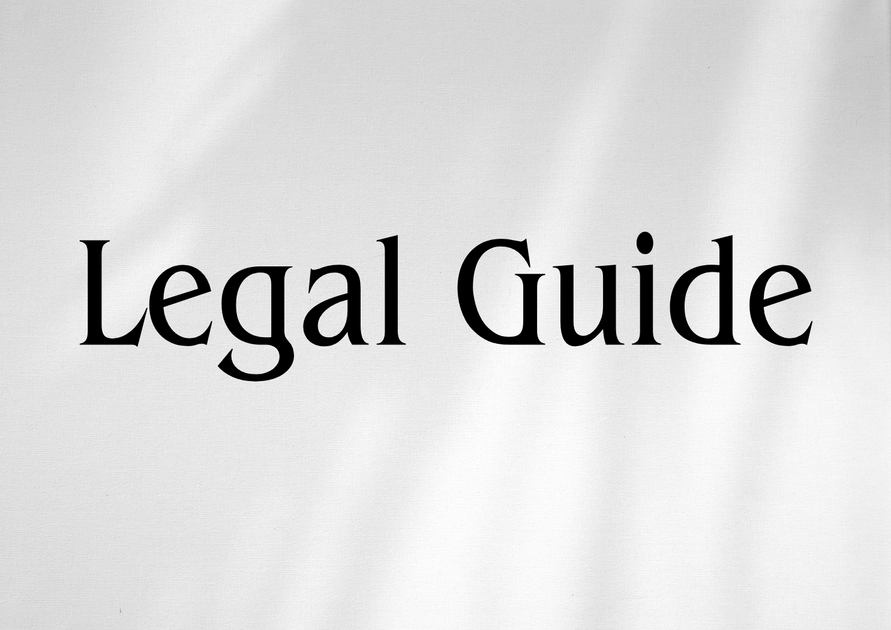Introduction: The Strategic Significance of Airport Environmental Regulation in Qatar–UAE Legal Context
As Qatar continues to expand its global aviation presence, environmental and noise regulations governing airports have moved to the forefront of legal and operational priorities. Qatar’s commitment to sustainable aviation is not only a response to international best practices but also a reflection of regional environmental standards that impact businesses and regulators across the Gulf Cooperation Council (GCC), especially in the UAE. With the acceleration of air travel infrastructure and the increasing integration between Qatar and key UAE stakeholders—including airlines, airport operators, logistics companies, and multinational businesses—the legal landscape around environmental and noise compliance in Qatar airports has become a matter of considerable strategic importance. Recent legal updates demand proactive engagement, directly influencing regulatory due diligence, business continuity, and reputational risk in the interconnected UAE–Qatar aviation ecosystem.
This article provides an in-depth analysis of the core statutory regimes, executive decrees, and international agreements shaping environmental and noise regulations for airports in Qatar, with critical insights tailored for UAE-based executives, legal councils, and operators. It identifies prevailing compliance challenges, compares legal frameworks, analyzes enforcement trends, and sets out evidence-based recommendations for achieving and maintaining regulatory alignment for UAE stakeholders engaged in Qatari airport operations.
Table of Contents
- Overview of Environmental and Noise Laws Shaping Qatar Airports
- Detailed Legal Provisions and Statutory Requirements
- Key Compliance Challenges and Enforcement Risks
- Comparative Table: Old vs. New Legal Provisions
- Case Studies: Applications and Lessons Learned
- Recommended Compliance Strategies for UAE Operators
- The Future of Qatar Airport Environmental Regulation: Implications for the UAE
- Conclusion: Staying Proactive in Cross-Border Regulatory Compliance
Overview of Environmental and Noise Laws Shaping Qatar Airports
Primary Statutes and International Treaties
Qatari airport environmental policies are anchored in:
- Law No. (30) of 2002 on the Environment Protection – The foundational statute empowering Qatar’s Ministry of Environment and Climate Change to issue binding directives and administer compliance inspections.
- Qatar Civil Aviation Law No. (15) of 2002 – Governs aviation safety, operations, and airspace management, including environmental controls in line with International Civil Aviation Organization (ICAO) Annex 16 (Environmental Protection).
- Ministerial Decisions and Executive Circulars – Specific regulatory instruments on noise abatement, emissions limits, air and water quality controls, and environmental impact assessment (EIA) standards for airports and aviation projects.
- International Commitments – Including ICAO environmental frameworks, to which Qatar is a signatory, and GCC-wide environmental cooperation memorandums influencing harmonized regulatory trends across the UAE and Gulf region.
How These Laws Interface with UAE Legal Interests
Qatar and the UAE routinely collaborate on cross-border aviation matters under GCC frameworks, requiring mutual recognition of environmental and noise standards within each territory. UAE operators conducting business at Qatari airports, or transporting passengers and cargo between the two states, must align with both domestic and Qatari regulations or risk compounded liabilities, including bilateral enforcement actions under mutual assistance treaties.
Detailed Legal Provisions and Statutory Requirements
Noise Pollution: Legal Thresholds and Abatement Measures
Law No. (30) of 2002 defines noise pollution as any unwanted sound exceeding set legal thresholds that adversely affects human health or the environment. For airports, relevant provisions include:
- Maximum Decibel Levels: Limits are set for residential, commercial, and industrial zones adjacent to an airport. For instance, peak permissible levels at airport boundaries typically may not exceed 65 dB(A) during the daytime and 55 dB(A) at night, unless mitigatory measures are in place.
- Obligatory Noise Mapping: Airports must undertake and regularly update noise mapping studies, detailing operational impact on communities and ecosystems.
- Mandatory Noise Abatement Procedures: Implementation of ICAO’s “Balanced Approach” is codified, obliging operational management protocols—altering flight paths, operational curfews, sound insulation programs, and graduation of aircraft fleet phase-out based on noise performance.
Air Emissions and Environmental Impact Assessments (EIA)
- Requirement for EIA Reports: Under Executive Guidelines to Law No. (30) of 2002 and Ministerial Circular (2017), new airport projects or expansions must conduct a comprehensive EIA, covering emissions (CO2, NOx, particulate matter), hazardous waste, and potential impacts on water resources and biodiversity.
- Emissions Caps and Mitigatory Mandates: Airport operators must comply with annual reporting and pollution caps consistent with both Qatari and ICAO standards.
- Contingency Planning: Airports are obliged to develop, maintain, and periodically review contingency plans for pollution incidents, including mechanisms for immediate notification to the Ministry of Environment and local communities.
Key Enforcement Powers and Penalties
Enforcement authorities—primarily the Ministry of Environment and Climate Change, and the Qatar Civil Aviation Authority—enjoy wide-ranging investigative and corrective enforcement powers. Administrative sanctions may include:
- Heavy administrative fines (ranging from QAR 10,000 to QAR 1,000,000 for major breaches),
- Temporary suspension of airport operational licenses,
- Mandatory publication of violations (with reputational impact),
- Criminal prosecution in cases involving gross negligence or environmental harm.
Visual Suggestion: Penalty Structure and Enforcement Process Flowchart—A diagram detailing how penalty tiers escalate and what the enforcement timeline looks like following a violation report.
Key Compliance Challenges and Enforcement Risks
Translating Regulatory Complexity to Operational Clarity
The regime in Qatar is marked by rapid legal evolution, new environmental reporting standards, and nuanced local practices. UAE-based airlines, contractors, and airport service providers face key pain points:
- Language and Interpretation Discrepancies: Regulatory texts are primarily in Arabic, with English translations sometimes lagging, increasing the risk of misinterpretation by international businesses.
- Dual Regulatory Exposure: UAE operators may be exposed to sanction under both Qatari and UAE environmental and noise laws if adverse events affect both jurisdictions or cross-border air routes.
- Dynamic Local Compliance Environment: Qatar frequently updates executive circulars, and adherence to best-practice environmental certifications (such as ISO 14001) is increasingly expected, but not uniformly codified.
Visual Suggestion: Compliance Checklist Table—A practical tool for UAE operators reviewing their obligations before, during, and after airport activities in Qatar.
Top Enforcement Risks for UAE-Affiliated Airport Operations
Common sources of enforcement action include:
- Non-compliance with updated noise abatement flight procedures, especially during airport construction phases,
- Failure to renew or revise EIAs following operational changes,
- Late or incomplete submission of environmental reporting, especially where dual filing is required for both Qatari and UAE regulators,
- Stakeholder complaints from communities or NGOs regarding noise or pollution.
Comparative Table: Old vs. New Legal Provisions
Major regulatory amendments in recent years have tightened environmental and noise obligations. The following table highlights key differences for airport operators and UAE entities investing in or operating within Qatar:
| Topic | Earlier Regulation | Recent Updates (2023-2024) |
|---|---|---|
| Noise Limits | Generic decibel caps; limited to residential areas | Zone-based caps, updated for commercial/industrial land use, specific to airport perimeter |
| EIA Requirements | EIA for new airports only | EIA mandatory for expansions/refurbishments, plus periodic review every 3-5 years |
| Compliance Monitoring | Annual self-reporting by operators | Third-party verification and random inspections by authorities |
| Penalties | Fixed moderate fines | Escalating fines, reputation sanctions, license suspension powers |
| International Compliance | ICAO standards referenced | Direct incorporation of ICAO Balanced Approach, increased cross-border reporting |
Case Studies: Applications and Lessons Learned
Case Study 1: UAE Airline Expansion—Noise Mapping Non-Compliance
When a leading UAE airline opened a new maintenance facility at Hamad International Airport without updating its noise mapping in line with Qatar’s Ministerial Circular (2022), the Ministry of Environment issued a formal warning and required immediate remedial action. The project faced a six-month hold, incurring operational and reputational losses. Governance lessons underline the necessity of proactive environmental due diligence before entering the Qatari market and the value of appointing local compliance agents familiar with current statutes.
Case Study 2: Environmental Reporting Delays—Cross-Border Liability
A UAE-headquartered airport services provider operating in both Abu Dhabi and Doha failed to submit its annual pollutant emissions report to the Qatari authorities on time. As news of the breach reached the UAE, local regulators initiated a secondary review under Federal Decree-Law No. (24) of 1999 on Environmental Protection and Development (as amended). This dual exposure heightened reputational risks and prompted an urgent review of all cross-jurisdiction reporting protocols.
Recommended Compliance Strategies for UAE Operators
Practical Steps to Achieve and Maintain Compliance
- Appoint a Local Environmental Liaison: Ensure all projects benefit from the expertise of a Qatari-based legal and environmental compliance specialist who monitors legal updates and interfaces with local authorities.
- Integrate Environmental Audits: Embed third-party environmental audits and noise monitoring into operational procedures, leveraging technology for near real-time reporting and adaptive management.
- Update Contracts and SLAs: Align all joint-venture and service-level agreements (SLAs) with explicit reference to updated Qatari noise and pollution standards, assigning clear responsibilities and liability protocols for breach or delay.
- Staff Awareness and Training: Invest in regular cross-border compliance training for all staff engaged in airport operations in Qatar.
Compliance Checklist
| Action Item | Responsible Party | Frequency | Evidence Needed |
|---|---|---|---|
| Noise Monitoring and Reporting | Project Environment Officer | Quarterly/As Required | Calibration logs, official report copies |
| Submission of EIA | Project Manager | Initial and upon significant change | Approved EIA document, ministerial receipt |
| Staff HSE Training | HR/Training Dept. | Annually | Attendance logs, training certificates |
| Local Regulatory Audit | Compliance Officer | Bi-annually | Audit checklist and findings report |
The Future of Qatar Airport Environmental Regulation: Implications for the UAE
It is anticipated that Qatar will further intensify its regulatory regime in step with global environmental priorities and ICAO’s evolving frameworks. This will likely include:
- Mandated adoption of sustainable aviation fuels and decarbonization targets,
- Expansion of community stakeholder engagement and redress systems,
- Deployment of advanced monitoring technologies (AI-based noise sensors, real-time pollution analytics),
- Closer harmonization across GCC via cross-jurisdictional regulatory protocols.
UAE operators with Qatari operations should anticipate these trends and embed flexibility in compliance systems to rapidly respond to new legal instruments and voluntary standards, including ISO 14001 and ISO 50001.
Conclusion: Staying Proactive in Cross-Border Regulatory Compliance
The legal framework governing environmental and noise compliance for airports in Qatar is dynamic and increasingly sophisticated, influenced by both domestic priorities and international benchmarks. For UAE operators and multinational stakeholders, proactive legal due diligence, continuous monitoring of regulatory changes, and investing in cross-jurisdictional compliance systems are essential to ensure operational continuity, regulatory trust, and reputational enhancement.
Looking ahead, the trend towards stricter environmental oversight is likely to accelerate, especially as the aviation sector comes under greater global scrutiny for its environmental impact and as Qatar prepares for major global events. Early, ongoing engagement with both Qatari and UAE legal advisors, regular compliance audits, and leveraging cutting-edge technology for compliance monitoring will maintain competitiveness, protect investments, and ensure sustainable operation across both regions.
Best Practice Recommendations
- Establish a GCC-wide compliance coordination team to track regulatory updates and ensure group-wide policy alignment,
- Formalize a legal review process for all new projects in Qatar, building in environmental and noise assessment at the earliest design stage,
- Actively participate in relevant industry forums and policy consultations to anticipate and influence regulatory trends,
- Maintain transparent reporting and open channels with regulatory authorities in both the UAE and Qatar.
This approach will position UAE businesses at the forefront of regional sustainability compliance and reinforce their reputation as responsible regional aviation leaders.




